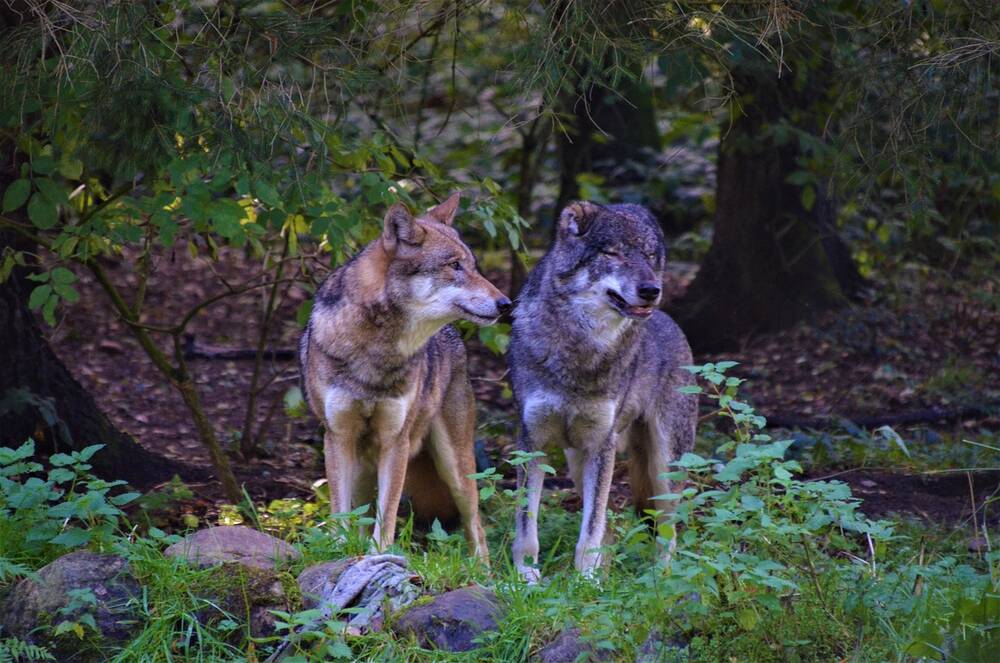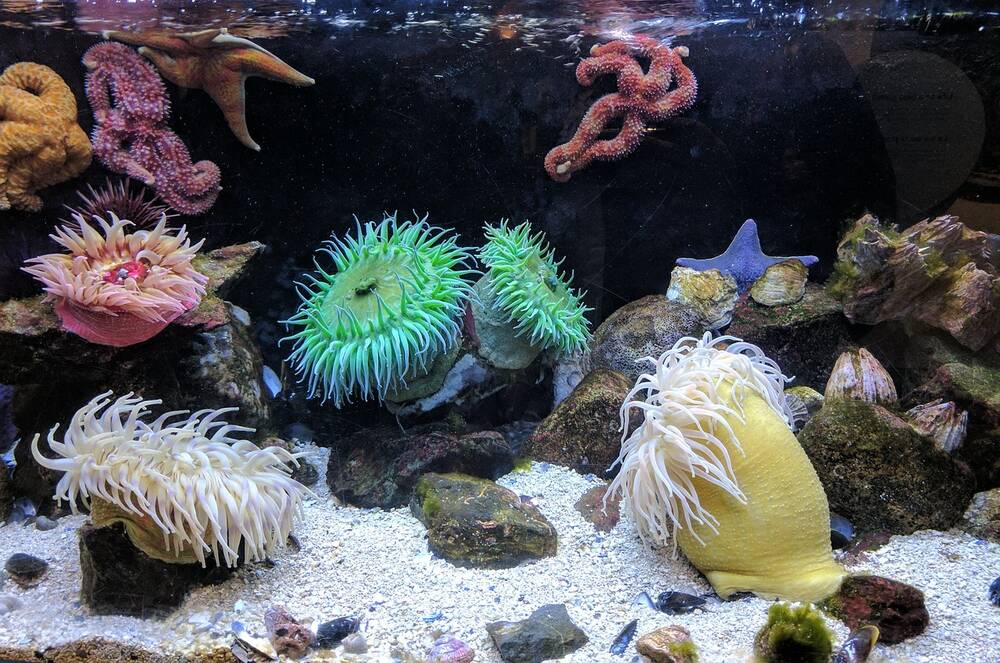Biodiversity encompasses the diversity of life on Earth, including the diversity of genes, of species, of ecosystems, and of functions. While a vast portion of the planet’s natural wonders remain undiscovered, the biodiversity we do know supports critical processes like pollination, nutrient cycling, and climate regulation.
This article covers 4 types of biodiversity, including the definition, importance, examples, threats and the importance of biodiversity as a whole. Explore how maintaining biodiversity is essential for a thriving planet and sustainable future, and how England is paving the way with the Biodiversity Net Gain policy; addressing development as one of the key contributors to biodiversity loss.
What is Biodiversity?
Biodiversity is the variety of living things on the planet, such as the trillions of genes, the billions of species, the thousands of ecosystems, or the countless ecological functions they perform.
While there are an estimated 8.7 million species on Earth, experts suggest there are still 5 million left to be described. It’s believed that around 85% of land species are unidentified, as well as a slightly terrifying 90% of marine life.
With a rate of discovery around 18,000 a year, it could take about 277 years to fully comprehend the wonders of Earth’s ecological biodiversity. However, that also means up to 1.5 million new species could be discovered within an average human’s lifetime.
The biodiversity that we do know can be largely categorised into 4 types: genetic diversity, species diversity, ecosystem diversity, and functional diversity, covered below.
Types of Biodiversity
Biodiversity is multifaceted, encompassing the variety of nature, species, ecosystems, and life forms. Four categories cover everything from genes to ecosystems, both crucially distinguishable plus intrinsically connected.
Genetic diversity covers gene variations between populations, covering species’ adaptive capacity in situations of environmental change. Picture breeds of dogs, varieties of apples, or blood types in humans.
Species diversity covers the variety of species within an area, indicating ecosystem health and services. Imagine a rainforest: full of diverse species like frogs, orchids and jaguars, or a coral reef: packed with sea turtles, corals, sharks and fish.
Ecosystem diversity covers a variety of habitats, ecological processes and communities. Picture all the different ecosystems around the world, from deserts to tundras.
Functional diversity covers the range of roles played by organisms within an ecosystem. Amongst many, this could be decomposers, pollinators, seed dispersers, and predators.
Genetic Diversity

Definition
Genetic biodiversity refers to the variety of genes in a population or species, encompassing ranges of gene combinations, alleles, and sequences of DNA.
The higher the genetic biodiversity, the higher the ecosystem health and resilience, crucial for a species’ adaptability to new environmental changes like pollution, climate change, or invasive species.
It can come from genetic recombination—sexual reproduction causes new combinations of genes and traits, therefore more diversity. It can also come from natural mutations, where random changes in a DNA sequence create a new variation of gene order or the gene flow between different populations.
Importance
Genetic biodiversity is important as, without it, species would be wiped out by any external harm. It allows species to be adaptable, reducing the risk of them becoming endangered species by ensuring there’s a varied pool of genes full of potential survival traits.
If one species had all the same genes, not only would that lead to harmful inbreeding and population collapse, but the second disease was added to the equation that the species couldn’t combat, you’d witness a detrimental species-wide wipeout.
Examples
For example, grey wolves have high genetic diversity in varied environments and can thrive across many ecosystems, whereas African cheetahs do not, making them vulnerable to disease and extinction.
The blue tit bird showcases genetic diversity in that woodland birds’ wings are shorter to fly well amongst trees, whereas hedgerow birds’ wings are longer so they can cover greater distances. When blue tits find mates in new territories, their wingspan shifts over time as one of them becomes less common, altering the genetic diversity.
Threats
Habitat fragmentation can cause losses of genetic diversity as species are less able to travel to new territories to find a mate, leading to a limited gene pool with a heightened risk of inbreeding.
Climate change poses risks as unprecedented, harsher conditions will wipe out more susceptible species less able to adapt. In the same vein, pollution or chemical exposure may mutate or damage genes in populations.
The activity of overexploitation of certain species—prevalent in fishing—also reduces genetic variation.
Species Diversity

Definition
Stepping away from a genetic perspective, species diversity encompasses the variety of entire species on Earth or within an ecosystem. The more complex a food web or chain, the more species diversity it has.
This involves 2 primary concepts: species richness, the number of species, and species evenness, the relative abundance of each species.
Without species diversity, ecosystem collapse would prevail, as ecosystems would not be resilient to changes or external threats.
Importance
With high ecosystem biodiversity, there are more ecosystem services, resilience, and productivity.
With species diversity, a stable supply of food for organisms at multiple levels is maintained, and the food web is well-supported.
Species richness is crucial, as it improves the likelihood of pollinators, medicinal plants, and other organisms that contribute largely to human well-being.
Think of a monoculture—these produce short-term, high-profit yields, and detrimentally harm nature in the long run. Species biodiversity offers aesthetic, recreational, cultural, and overall multitudes of value, enriching the human experience.
Examples
To picture species biodiversity, picture beautiful, colourful, fluttering, buzzing, rich nature—a place where thousands upon thousands of plants and animals and insect species coexist harmoniously.
A rainforest is an excellent example, with some of the most rich and varied species in the world, and creating some of the most ecologically-valuable biodiversity hotspots.
Areas with low species diversity are those that must be conserved, such as the Atacama desert, with a fragile, unstable ecosystem, or the Arctic tundra, where extreme cold and short-growing seasons lead to restricted nutrient availability.
Threats
Species diversity is under threat from habitat loss, deforestation, and agriculture, which wipe out habitats and reduce species populations.
Climate change poses a significant threat, with altered patterns in weather, rising temperatures, and ecosystem disruptions due to shifts in habitats.
Fragmenting habitats leads to isolation and lack of breeding, causing ecosystem collapse, and makes species more vulnerable to external harm or extinction.
Pollution degrades ecosystems, and is harmful to a great majority of species.
Ecosystem Diversity

Definition
The largest scale of biodiversity, ecosystem diversity covers the variety of ecosystems across the planet, in a set region, geographical context, or within a specific ecosystem.
This could be forests, coral reefs, wetlands, grasslands, oceans, deserts, or thousands of other varied ecosystems.
Ecosystem diversity covers different physical environments, different interactions within ecosystems, and the variety of species and processes that shape those ecosystems’ structures and functions.
The biosphere depends on ecosystem diversity to function, and without it, essential processes like nutrient cycling, climate regulation, and species interactions would collapse.
Importance
The higher the ecosystem diversity, the wider the range of species that can be supported. It directly equates to biodiversity levels, maintaining the health of our environment, keeping species from extinction, and regulating the Earth’s climate.
When ecological balances are maintained and ecosystems stay resilient, human life is sustained, as we depend on nature for essentials like clean air, food, water, and medicine.
Varieties of ecosystems produce benefits relied on by countless industries, such as tourism and fishing to silkworm larvae for silk.
Examples
Ecosystems vary wildly, such as tropical rainforests’ complex structure of layered canopies, with rich plant and animal life leading to high productivity.
Varying wildly is a coral reef; a marine ecosystem with diverse coral, fish, and other marine species.
In contrast, a desert ecosystem is temperate and arid, with cacti, reptiles, and other especially-adapted species.
Tundra ecosystems lack biodiversity, consisting of treeless, near-freezing environments, packed with adapted species such as mosses, lichens, and Arctic animals.
Threats
While climate change threatens species by altering their habitats, on a broader level, it can have negative impacts on entire ecosystems and interconnected communities of species.
Furthermore, certain ecosystems, such as overlogging in the Amazon rainforest, are over-exhausted, leading to detrimental effects over time and imbalances of ecosystem biodiversity.
Urbanisation wipes out masses of ecosystems, making room for development, agriculture, or any other human activities, however, England’s trailblazing Biodiversity Net Gain (BNG) policy restores ecosystems and enhances biodiversity post-construction.
Functional Diversity

Definition
Functional biodiversity refers to varieties of functions (such as decomposition), biological roles (such as pollinators), and processes (such as photosynthesis).
Instead of diversity of genes, species, or ecosystems, functional diversity encompasses the different ways that species interact with each other and their environment.
When measuring functional biodiversity, you’re ensuring that an ecosystem can effectively operate and run essential functions like water purification, pollination, nutrient cycling, and climate regulation.
Importance
Functional diversity is important as measuring biodiversity from a numerical perspective alone—the number of genes, different species, or ecosystems—fails to account for the specific roles each species or ecosystem plays in maintaining the health and functionality of the environment.
If ecosystems are copious in number but limited in function, they may struggle to adapt to changes, reducing ecosystem resilience and services.
Pollinators would decline, and vital sources for human food, medicine, and well-being would be depleted. Without water purification, water quality would deteriorate, leading to health risks and loss of aquatic biological diversity.
Examples
There are countless examples of functional diversity helping nature thrive. Seed dispersers, like birds and mammals, cause plant regeneration leading to diverse plant communities.
Predators such as wolves keep herbivore populations at a healthy rate, and withstand across multiple levels of the food chain. Without this predatory hierarchy, ecosystems lose structure and balance, which can lead to collapse.
Without the photosynthesizer plants that produce energy by capturing sunlight, there would be no bottom layer of the food chain, hence no food chain at all.
Threats
Invasive species pose a significant threat to functional biodiversity by outcompeting native and endemic species. When this happens, the hard-set functions of a thriving ecosystem are disrupted and reduced, leading to functional homogenization (loss of diversity).
Loss of keystone species, such as a keystone predator within the food chain, further disrupts the balance by leading to overpopulations and loss of vegetation or prey species, ultimately destabilising the entire ecosystem.
Why Biodiversity is Important
Biodiversity maintains stable, reliable ecosystems which won’t immediately collapse when climate shifts, natural disasters, or other harms are introduced.
The higher the biodiversity, the more productive an ecosystem is. This enhances the services key to human survival like soil fertility, water filtration, and nutrient cycling.
Moreover, biodiversity plays the most crucial role in the fight against climate change, such as with oceans storing carbon, forests sequestering it, renewable energy from biomass and maintaining ecosystem resilience to extreme weather events.
Threats to Biodiversity
As mentioned, the most significant threats to biodiversity are urbanisation, development, deforestation, habitat fragmentation, and pollution. These activities lead to the destruction of natural habitats, driving species to extinction and disrupting ecosystems’ ability to function properly.
England is paving the way for biodiversity conservation with the Environment Act 2021’s Biodiversity Net Gain (BNG) policy. All development across the country must not only compensate for but also improve, to a minimum increase of 10% in biodiversity levels.
At Gaia, we’ve built the largest BNG Marketplace—the number one place for developers to source off-site BNG units from BNG sellers across the country, and allow sustainable development to operate in a way that restores our environment.
More Information
https://naturalhistory.si.edu/education/teaching-resources/life-science/what-biodiversity
https://www.theguardian.com/news/2018/mar/12/what-is-biodiversity-and-why-does-it-matter-to-us
https://www.worldwildlife.org/pages/what-is-biodiversity
https://royalsociety.org/news-resources/projects/biodiversity/why-is-biodiversity-important
https://www.eea.europa.eu/en/topics/in-depth/biodiversity
https://www.nwf.org/Educational-Resources/Wildlife-Guide/Understanding-Conservation/Biodiversity

